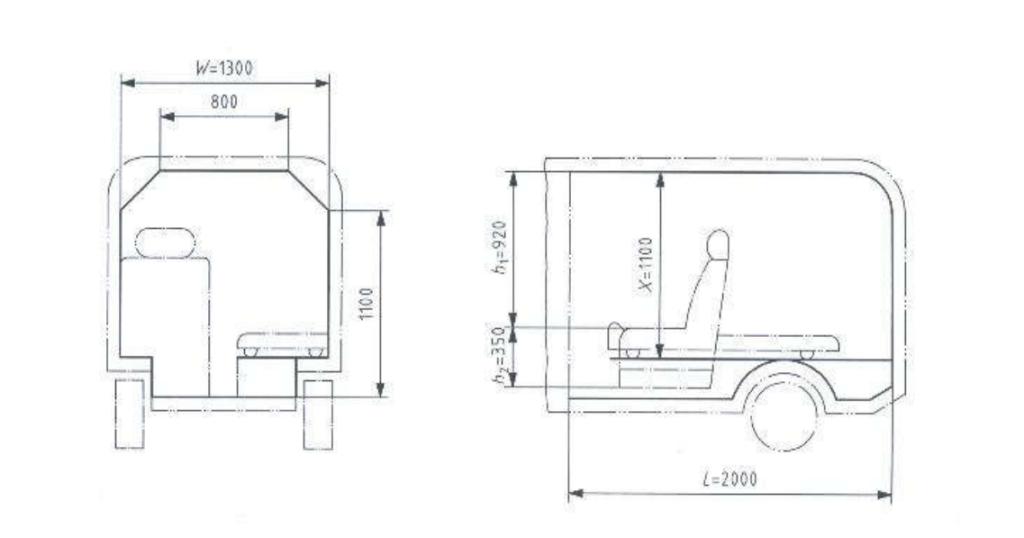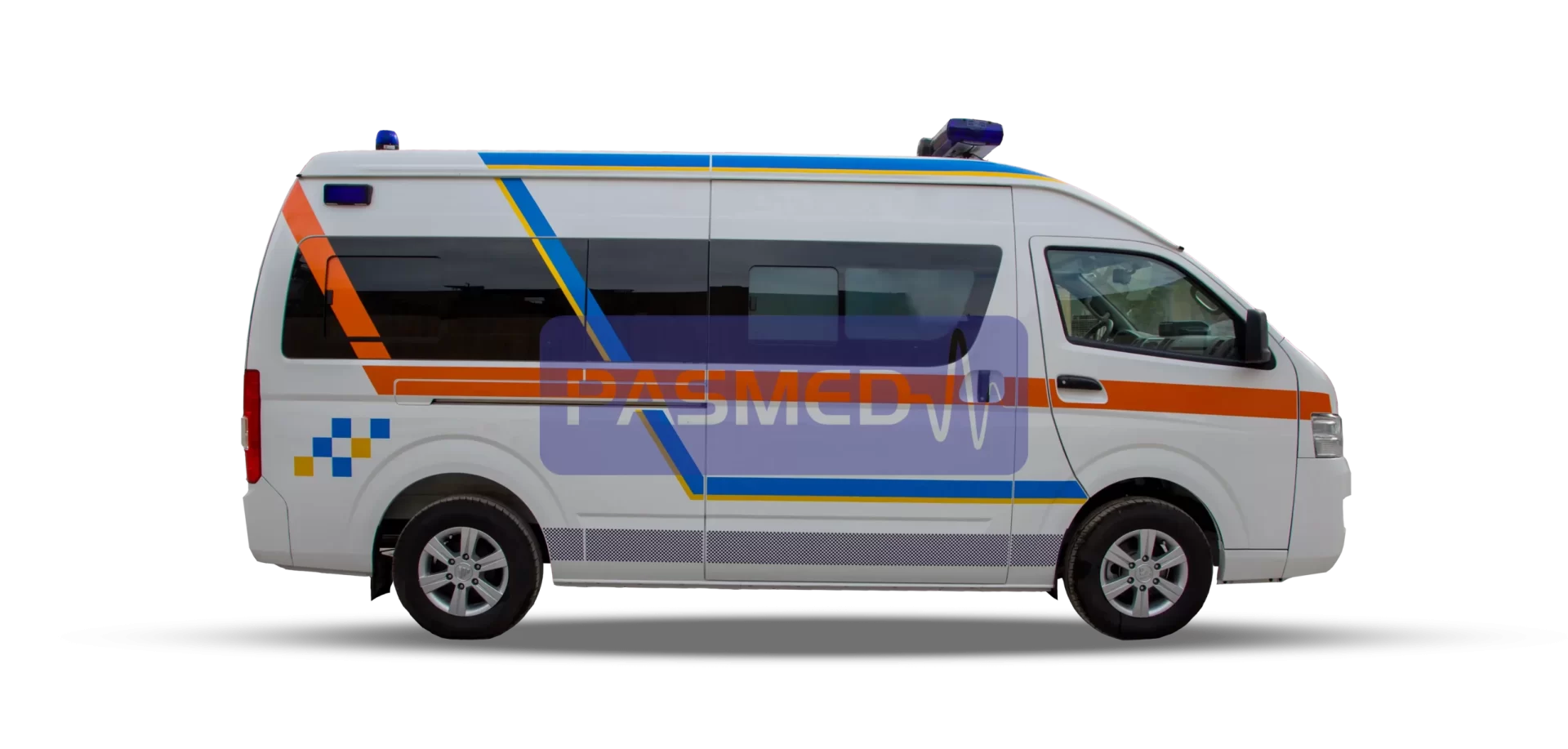Ambulances are one of the most important emergency vehicles which is directly related to human life, so before buying an ambulance you need to receive advices on ambulance equipping and purchasing. Ambulances are used for transferring and monitoring sick and injured people in natural disaster, unforeseen events, accidents etc.… ambulances are in different types and each types have different uses. Some of them are used to transport the patient to treatment facilities, some of them to transport and monitor and treatment the patients out of the hospital.
Considering for what purpose ambulances are used for or, in what places or conditions it is used for, we suggest you to consult with the consultants of Nima P. A. S. Service company to purchase an ambulance.
Counselling and advices on purchasing and equipping an ambulance
- Ambulances are one of the most important emergency vehicles and strategic vehicles which you need to get permits from related organization to buy them; specially university of medical sciences located in your city.
- One of the important points before buying an ambulance, is the location where ambulances are used. Must be considered that ambulance in which area is used, urban areas, mountainous areas, desert areas, ect…
- Anticipating the type of the possible patient and preparing the equipment which they need is very important.
- Considering the area where ambulance is used, the condition of use of the equipment of patient’s cabin and choosing the right chassis, are important points before purchasing an ambulance.
- Choosing right medical equipment for the type of ambulance and the type of service required.
Types of use and fields of use of an ambulance
- Public ambulance for transporting patients to treatment facilities.
- Stationary ambulance (stadium, mine refinery…)
- Ambulance used for escort
- Ambulance used for nervous and mental patients
- A baby ambulance
- Ambulances which have icu and ccu
Choosing right chassis when making an ambulance
- Making suitable patient’s cabin for equipping and technician assistance
- Considering car depreciation according to the type and duration of its use
- Vehicle chassis safety
- Availability of car spare parts
- Geographical area and area of ambulance service (mountainous, desert…)
The types of ambulance equipment
Type a ambulance: ambulance with basic facilities and basic equipment for transporting non-emergency patients. This type of ambulances has 4 basic equipment: stretcher, revive bag and first aid bag, suction and oxygen capsule.
Type b ambulance: this type of ambulances is used for basic treatment and monitoring patients and, transporting patient to the hospital.
Type b ambulances called mobile icu, in addition to have type a facilities, have ventilator, shocker, monitoring, maternity set, burn treatment set, medical shock


Type c ambulance: this type of ambulances is mobile intensive care unit for transporting and advanced treatment and patient monitoring. In addition to transporting patients and advanced treatments these type of ambulances have patients’ resuscitation, icu and, ccu.


The equipment’s of the cabin of the ambulance
- The hook of the serum is made of stainless steel
- The floor of the cabin is covered with plywood water proof combination that has vinyl medical grade
- Partition for separating patient cabin and driver cabin
- Sliding communication window
- Shelving for medical equipment
- Folding bench
- Nurse chair with belt
- Oxygen central system
- Electricity and lighting system and separate electrical equipment inside the cabin of the patient
- 12 v electricity power output with protective cap ip54
- 220v electricity power output with protective cap ip54
- Back up battery
- Invertor 12 v to 220 v
- 220 v power switch on the power panel
- 220 v power output to connect to an external source
- Connection cable to external source
- Digital power panel (pasmed digital control panel) with touch screen
- Automatic adjustment of patient cabin temperature
- Having manual keys to control the electrical power system when there is a technical defect in the touch screen
- Inter communication between the driver cabin and patient cabin
- 220 v power electricity switch
- Driver cabin panel with the ability to turn on and off the main power -it has the ability to communicate with the patient cabin – signal which indicates that the rear door is open
- Alarm system warning and amplifier
- Heating and cooling system
- Two-way air drain
- Signs and lables and adhesive tapes will paste
- Medical equipment is according to 4374 Standard principle
- Installing equipment which customer order
Necessary medical equipment for making an ambulance
- Wheeled stretcher
- Folding stretcher
- Chair stretcher
- Basket stretcher
- Orthopedic stretcher
- Revive bag
- Laryngoscope
- Bag valve mask
- Glucometer (glucose meter)
- Barometer (borescope)
- Mouth-to-mouth resuscitation mask
- Thermometer
- Stethoscope
- Flash light (head lamp)
- Vacuum matrix
- Gauze
- Band aids
- Angiocath
- Syringe
- Serum
- Serum keeper which can be used in ambulance
- Disposable facial mask
- Protective glass
- Oxygen storage tank
- Bandages
- CPR board
- Pulse oximeter
- Laryngeal mask
- Ventilator
- Mechanical suction
- Portable suction
- Suction cap
- Tracheal tube
- Electrocardiograph
- AED
- Defibrillator
- Head immobilizer
- Spine short back board
- Spine long back board
- Wooden splint to fix body parts
- Soft plastic splints with aluminum straps
- Medical belts
- Philadelfia neck splint
- Splint traction
- Raw splint
- Wire splint
- Aluminum splint
- Splint with cold gauze
- Triangular bandages to tie the splint and collar
- Chemical ice pack
- Short backboard for patients with possible spinal cord injury
- Medical collar for children and adults
- Safety box
- Examination gloves and surgery gloves
- Emergency scissors
- Spider emergency rope
- Cardiac monitoring device
- Luminous paint label

